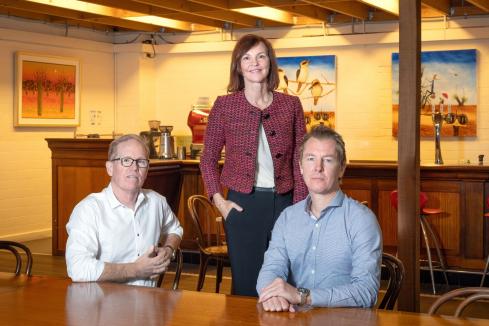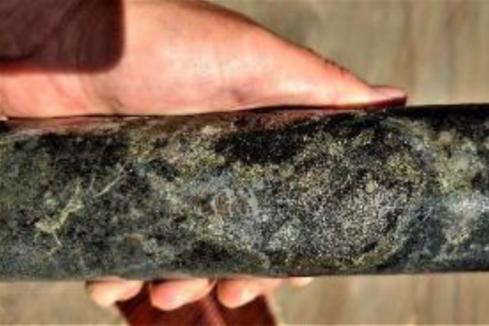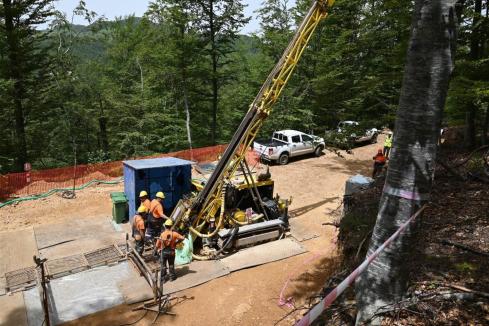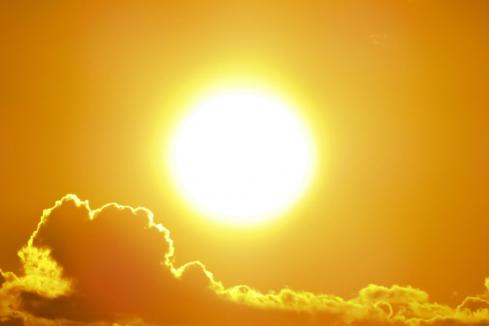Move over RCF and Orion Mine Finance, there’s a new kid on the block with $100m to plough into mining investments. Ibaera Capital is applying a new paradigm to its private equity offering, combining the $100m it has available with its top-notch team of geologists to turn undervalued exploration plays into bonafide mines. Its first investment is into ASX listed Azumah Resources’ Wa Project in Ghana.

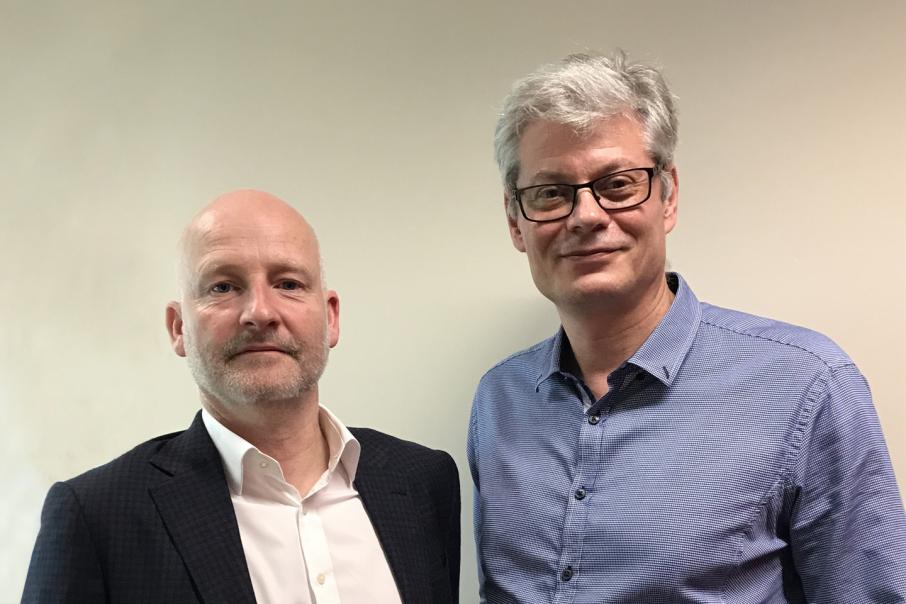
Move over RCF Capital, move over Orion Mine Finance, there’s a new Perth based mining fund on the block with a $100m war chest and a set of exquisite geological smarts to match.
After running the ruler over dozens and dozens of opportunities, Ibaera Capital has only been compelled to open its wallet once so far with a USD13.5m investment into Azumah Resources' promising Wa African gold project that already boasts over 600,000 ounces of gold in reserve going over 2 grams per tonne gold, relatively close to surface.
The operators behind the new new fund are serious technocrats too with blue chip backgrounds with majors such as Fortescue Metals Group, WMC Resources and BHP.
The technical team is led by the very successful West Australian geologist and geological thought leader Dr Jonathan Hronsky and it is Hronsky and his team of geological experts that gives Ibaera Capital its edge.
The team is looking to identify emerging base and precious metals exploration and development stage projects that are undervalued and perhaps even misunderstood.
Ibaera will then look to deploy its capital and its considerable geological ability to set the project on a pathway to production and its geological input has already had a significant impact on Azumah's Wa gold play that has been turning out some exceptional numbers of late.
Ibaera managing Partner James Wallbank was the former Manager of Business Development for FMG where he was responsible for the acquisition of new non-iron investments in Australia and internationally.
Dr Hronsky, Ibaera’s General Partner of Global Targeting and Research, has more than 30 years experience in the global mineral exploration industry under his belt and has been involved in a myriad of significant mineral discoveries.
He is also the Chairman of the Board of the Centre for Exploration Targeting at the University of Western Australia, Chairman of the Australian Geoscience Council and a Principal of Western Mining Services.
Dr Hronsky was previously Manager-Strategy & Generative Services for heavyweight BHP Billiton Mineral Exploration and he was the Global Geoscience Leader for WMC Resources Ltd. In those roles he has no doubt seen it all and he comes to the Ibaera table and that of Azumah Resources with a wealth of geological theories that he was able to put to the test over decades of working for the majors.
His targeting work was instrumental in the team that discovered the West Musgrave nickel sulphide province in Western Australia and he was also part of the teams that found the Francopan gold prospect, BHP’s high grade Venus nickel deposit and the Tropicana gold project to name just a few.
Whilst Hronsky and Wallbank have obvious mining pedigree, the same can also be said of their remaining partners in Ibaera, Paul L’Herpiniere, Peter Hairsine and Christopher Alexander, all of whom have blue chip geological and financial resumes.
L’Herpiniere in particular was the former exploration manager for Fortescue Metals.
Ibaera is intending to deploy A$100m into the Australian junior mining market over the next 18 months and its first investment for USD$13.5m into Azumah's Wa gold project in Ghana is a curious one – Azumah's market cap is just $17m and Ibaera has agreed to invest pretty much that entire amount into the Wa project to earn a 47.5% interest in it.
Wa has an ore reserve of 624,000 ounces of gold at a grade of 2.14 grams per tonne within a broader JORC compliant mineral resource of 41.5 million tonnes grading 1.5 g/t gold for 2.06 million ounces.
The project appears to be somewhat de-risked for rapid development with excellent infrastructure, grid power, mining leases secured and its location within a reasonably safe and supportive jurisdiction.
Feasibility level metallurgical work has also been done that returned about 92% average gold recoveries.
Dr Hronsky said: “In the case of Azumah, what we saw is that they made a pretty significant discovery at the Kunche-Bepkong area and I think Julie was more historical where they drilled some holes and found mineralisation there.”
“We also then looked at the fact that they have this very large regional land package over 100 kilometres of strike and there were a large number of other mineralised occurrences. We saw potential to add a lot of value at ones that were already found and discover new ones.”
Mr Wallbank added: “……..from a higher level project point of view, when you look at Azumah, they had 2.1 million ounces of gold in resources, they have more than 50 drill holes with more than 100 gram metre intercepts. They are in Ghana, which is a good place to be in, being the second largest gold producing country in Africa.”
Dr Hronsky added that the main Kunche deposit was interesting as it is an orogenic gold deposit that is structurally complex and provides lots of opportunities for the application of geological smarts.
“Applying some good geology can really help you understand them and therefore add more ore. They are also a class of deposit which we know has a strong vertical extant. There will be feeders, they will be connected to them, that is the nature of those things.”
“There are shoots within it and I think one of the keys is us recognising that control on the shoots seems to be these northeast structures and we recently had a bit of success drilling the intersection position. Our model is a feeder position that extends along that plunge. That is the exciting bit.” He said.
It seems that Hronsky’s geological theories at Azumah’s Wa project are checking out too.
In May, Azumah told the ASX that it had made a game changing intercept of 44 metres grading 5.37 grams per tonne gold from 99m down-hole including a higher grade zone of 27m @ 7.86 g/t from 116m with a breathtaking peak intercept of 1m @ 144g/t gold.
Follow-up results included a 4m intercept at 3.2g/t gold from 178m and 7m @ 1.90g/t Au from 186m below another hole that returned 27m @ 2.43g/t gold from 137m.
Hronsky said that it was particularly exciting that solid results were showing up at Wa in the fresh rock indicating that the deposit likely continues below the weathering zone.
Azumah has built up its board recently too with the appointment of Banking and project financier Debra Bakker and mining consultant and private equity adviser Linton Putland. Geoff Jones has stepped down.
Ms Bakker has more than 25 years’ experience as an international banker, deal maker and advisor to the resources industry, holding various senior positions with the Commonwealth Bank of Australia, Standard Bank London Group and Barclays Capital in Sydney, London, New York, Chicago and, since 2003, Perth.
She is currently a Non-Executive Director of Independence Group and Capricorn Metals Ltd and holds several not-for-profit sector roles.
Mr Putland has more than 30 years’ experience in technical, operational and managerial roles centred on open pit and underground operations covering a wide range of commodities in Australia and overseas, including several campaigns in Africa.
He is also an independent Non-Executive Director with Pacific Energy.
Whilst activity at the Wa gold project continues to pick up pace, Ibaera is also on the hunt for further projects that meet its investment criteria.
As a fund, Ibaera is a little different to traditional mining institutional investors in so much as it doesn’t just bring money to the project – in the case Azumah’s Wa project, it is running the exploration project too.
It probably helps also that Hronsky is quite bullish on Azumah's Wa project.
He said “You know this is a system that is alive and is mineralised in the fresh rock. The chance of that stopping geologically, based on everything we know about orogenic gold deposits, in the first couple of hundred metres is zero."
“It doesn’t mean that it doesn’t require skill and drilling to find its continuous extensions but they will be there.”








